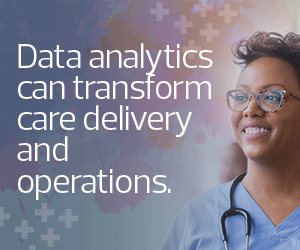Healthcare organizations have no shortage of data about their patients, not only from electronic health records (EHRs) but also from remote patient monitoring. So far, however, it has been difficult for IT and clinical leaders to translate this information into real-time insights that improve patient care and reduce treatment costs. This could be poised to change, according to presenters at .conf24, this year’s edition of Splunk’s annual Las Vegas conference.
“What’s exciting is, we’re at a time in the world now where artificial intelligence and machine learning is really beneficial to helping the healthcare industry solve challenges and provide more quality of care,” said Brett Roberts, global partner technical manager for Splunk.
Splunk offers “brilliant” out-of-the-box capabilities that allow users to achieve insights without machine learning expertise, said Alan Peaty, senior partner solutions architect at Amazon Web Services.
But for healthcare organizations looking to build their own custom ML models, he said, it makes sense to integrate their Splunk data with their other information residing on AWS. “This is very much about providing the data and insights to the people who can act on it,” Peaty said.
DISCOVER: Clinical workflow optimization creates better patient outcomes.
A Necessary Addition for Healthcare Organizations
In a live demonstration, Roberts and Peaty imported simulated data from wearable patient devices from a Splunk environment into AWS, merging it with data from EHRs, customer relationship management platforms and other sources. They brought the data together in Amazon SageMaker Canvas, AWS’ no-code ML interface for business analytics. They then used AWS Glue, a serverless data integration tool, to format the data. Finally, using the managed SQL engine Amazon Athena, Roberts and Peaty ran a query on 183,000 patient records, looking for connections between data from wearable trackers and hospital readmission rates.
The results were illuminating — and nearly instantaneous.
“You can see that age has an impact on whether a patient is admitted or not,” Peaty said. “That makes sense. But also, another feature that has come from Splunk is around the uptime of those wearables, which also has an impact. So, as a healthcare provider, you can now start to see how these models can help you personalize care for patients and proactively intervene.”
Click the banner below to learn how a modern data analytics program can optimize care.
Centering Patients in Data-Driven Decisions
Hospitals have both financial and clinical incentives to reduce patient readmissions. Notably, the Centers for Medicare & Medicaid Services’ Hospital Readmissions Reduction Program links payments to healthcare organizations’ ability to reduce their readmission rates by improving communication and care coordination efforts. A predictive model that helps hospitals identify patients with a heightened risk of readmission could allow providers to reach out to those patients before they come back to the hospital, reducing avoidable readmissions and potentially preventing adverse health outcomes.
Peaty also showed how the ML model can generate predictions for specific patients. In one example of an 89-year-old patient who doesn’t often use his wearable device, the model showed that the patient had a high likelihood of readmission. “So, as a healthcare organization, we’re going to reach out to them to make sure we intervene,” he said.
In an interview with HealthTech, Roberts said the demo represented the “art of the possible” rather than reflecting a current widespread use case. However, he said he hoped it would serve as inspiration for healthcare organizations looking to increase their use of predictive analytics to solve real-world problems.
He stressed the importance of including clinicians in both the design of ML models and in the decision-making that stems from these models’ predictions.
“You want to make sure that you’re highly accurate,” Roberts said. “It’s all about the training part of it. For use cases like this, where it is potentially life or death, you really need to double down to make sure you have both the data scientists and the people with domain expertise.”
“It’s a team sport,” he added. “You have to include the human element.”











